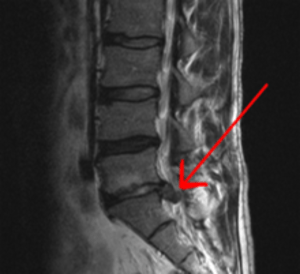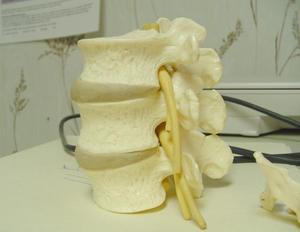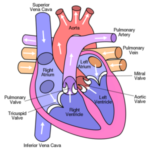I am no stranger to back pain. It affects my life and my daily activities every day. When I heard about treatment with radiofrequency ablation, it almost sounded too good to be true.
I first heard this procedure mentioned back in January 2010 on a local CBS news program. The segment featured a middle aged woman who complained about being in pain constantly from a herniated disc in her low back. She saw a pain management specialist in Manhattan, made an appointment for radiofrequency ablation and in 30 minutes, she was pain free. One time, virtually no recovery time, no down time, no painful physical therapy, and no long drawn out procedures. Wow. How great is that? I wrote down the info and almost immediately looked online for the segment and name of the doctor who performed the procedure. I found it, and later faxed my information including my written MRI report. Never heard from the doctor! Even after leaving a couple of phone messages.
However, recently, I received a newsletter from a local hospital, explaining how an area woman received this exact same procedure for neck pain and was much much better. So, I call the hospital for the name of her doctor, got an appointment with him, set up the two step procedure and got it done.
It was explained to me that in the first of a two step procedure, a nerve block is performed under a very brief general anesthesia. In the second part, a needle is placed along the spinal nerves and after a very short time out, the patient is awakened, to help guide the needle in and the nerve is “killed” with heat. They use radio waves, hence “radiofrequency” and the nerve is destroyed, hence “ablation”.
It is performed as an ambulatory surgery, where the patient needs to fast for 8 hours before as general anesthesia is administered. A medical history is taken and medication history is taken, as they may be contraindicated and asked to refrain from taking them for a few days before the procedure. Many patients, at this point, have taken or are taking many medications for pain.
The day of the nerve block, the patient is made comfortable, led to the operating room, and it is explained again what will happen. The first part of the procedure involves a nerve block in the general area where the pain is. This involves injecting corticosteroids and lidocaine and other medication into the area. The patient is in recovery for about a half hour to an hour and can be taken home. Someone needs to accompany the patient and drive them home. Hopefully in a few days, some relief will be had. In one to two weeks after this procedure, the second part of the procedure is scheduled, and after the same pre-op instructions, the patient is brought in again, out for just a few minutes while needles are placed, then awakened to help with the placement of the nerve probe for the ablation.
It is stressed, however, that the nerve can only be destroyed if it is a sensory nerve only. This is the reason for the awakening of the patient. An electrical pad is placed on the back of the thigh of the side of the area where the nerve block was. If the patient feels any sensation in the leg as the doctor tests the nerve probe, the nerve in question will not be ablated. If they do find the offending nerve, they will, with the help and guidance of X-rays right there in the operating theater, destroy it. Again, the patient will go to recovery for a short period of time, where they are given a drink and some food and monitored before being released home.
Patients are instructed to follow up with their pain management doctor, and can expect to feel some relief up to two weeks after the ablation. The procedure is very minimally invasive and the side effects are few. As with any procedure, there is a risk of infection and bleeding.
Unfortunately, I, personally, did not receive any relief from the radiofrequency ablation. The nerve testing in the second part of the procedure caused a lot of tingling sensation in the back of my affected leg. The doctor also indicated that my history of spinal fusion implant in the affected area also physically restricted the options of placement, as well.
I would recommend this procedure, however, as a less invasive way to treat back and neck pain when medication, physical therapy and other interventions have failed. Radiofrequency ablation has been successfully performed for more than six years.




